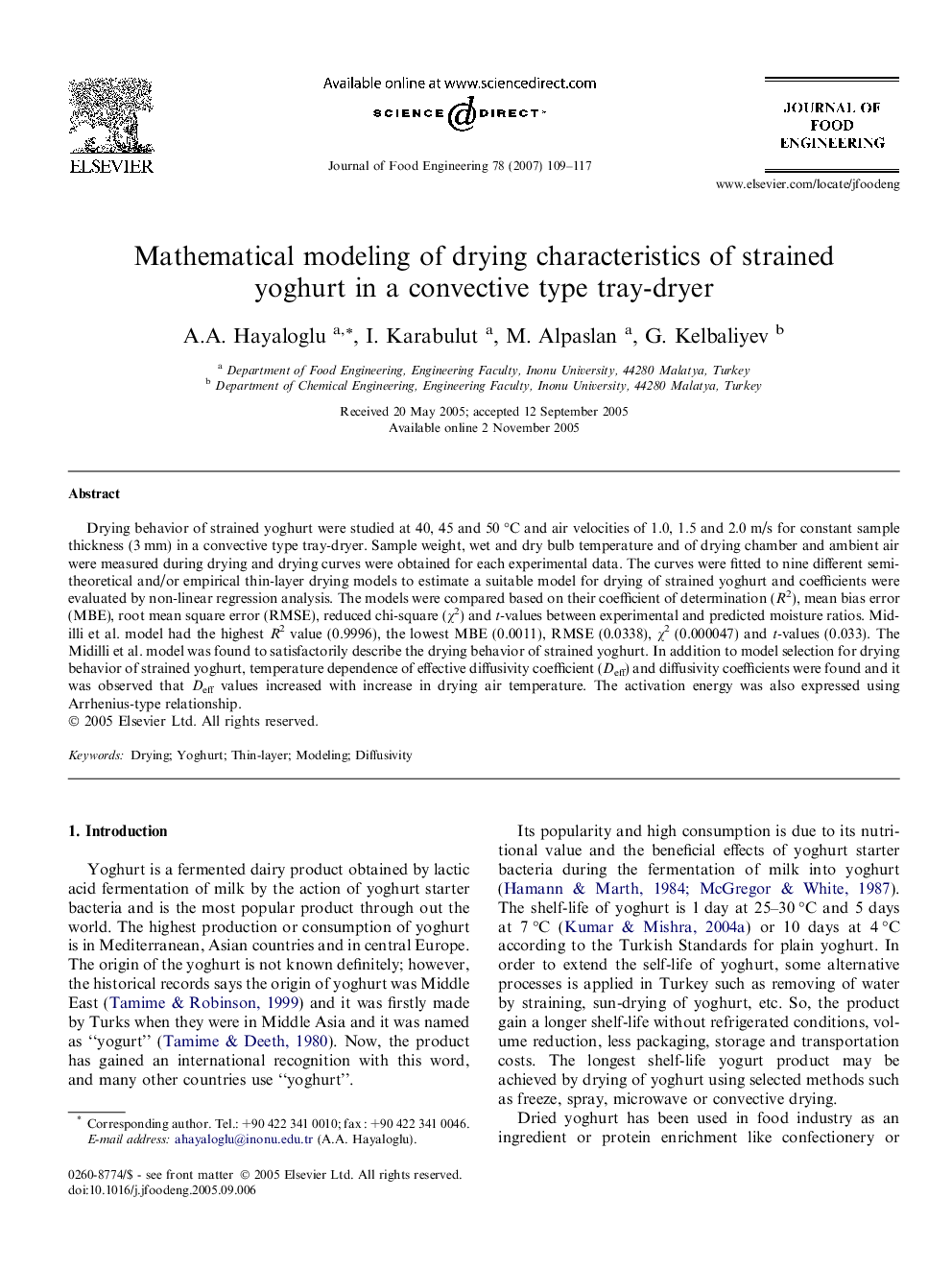| Article ID | Journal | Published Year | Pages | File Type |
|---|---|---|---|---|
| 226163 | Journal of Food Engineering | 2007 | 9 Pages |
Drying behavior of strained yoghurt were studied at 40, 45 and 50 °C and air velocities of 1.0, 1.5 and 2.0 m/s for constant sample thickness (3 mm) in a convective type tray-dryer. Sample weight, wet and dry bulb temperature and of drying chamber and ambient air were measured during drying and drying curves were obtained for each experimental data. The curves were fitted to nine different semi-theoretical and/or empirical thin-layer drying models to estimate a suitable model for drying of strained yoghurt and coefficients were evaluated by non-linear regression analysis. The models were compared based on their coefficient of determination (R2), mean bias error (MBE), root mean square error (RMSE), reduced chi-square (χ2) and t-values between experimental and predicted moisture ratios. Midilli et al. model had the highest R2 value (0.9996), the lowest MBE (0.0011), RMSE (0.0338), χ2 (0.000047) and t-values (0.033). The Midilli et al. model was found to satisfactorily describe the drying behavior of strained yoghurt. In addition to model selection for drying behavior of strained yoghurt, temperature dependence of effective diffusivity coefficient (Deff) and diffusivity coefficients were found and it was observed that Deff values increased with increase in drying air temperature. The activation energy was also expressed using Arrhenius-type relationship.
